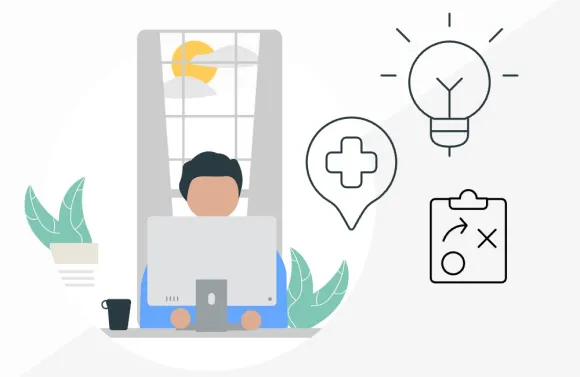
As a trusted advisor to your employer clients, you know how crucial benefits communications and education are — especially during open enrollment.
It’s no secret that many employees struggle to understand the benefits offered by their employer – if they’re aware of the benefits in the first place. But that doesn’t mean benefits don’t matter to employees. In fact, they matter now more than ever. Employers remember the Great Resignation only two years ago. The switch has flipped with the voluntary quit rate for employees in the U.S. falling below 2 percent in September 2024 for the first time in nearly 10 years. We’ve entered the Great Stay with employees citing pay (48%), job security (41%), health benefits (36%) and flexible work arrangements (31%) as some of the top reasons they’re sticking around, according to a 2024 Willis Towers Watson survey.
Benefits are a clear part of an overall employee retention strategy. That requires an effective benefits approach, and as a broker, you have an opportunity to play a huge role in advising your clients on the ideal education and communication strategy for their workforce — making you an indispensable advisor in addition to the services you already provide.
3 Ways Your Clients Can Improve Benefits Education and Communication
As a broker, you already know the typical advice for better communication. Generally, it includes points such as:
- Be clear and concise
- Use varied communication channels
- Communicate regularly
- Understand your employees' needs
- Personalize your messaging
- Do what you say you’ll do
All of this is good advice – the table-stakes of effective communications. If your clients haven’t already incorporated these into their benefits communication programs, you should absolutely help them understand why it’s so important. A few resources to consider sharing with them:
- The Top 5 Ways to Make Your Open Enrollment Communications Memorable
- How to Boost Employees’ Personal Health Literacy
- Warm Up for OE Employee Benefits Enrollment & Engagement Playbook
We want to help you add additional value – and more “oomph” to your open enrollment preparation – so here are three ways you can help your clients make a bigger impact with their benefits communications and education programs.
1. Unleash the Power of Live Interactions
There’s no doubt that employees today are far more technologically savvy than ever before and enjoy accessing content at their convenience. Most are daily users of social media, email, and video streaming services — Pew Research shows nine-in-ten Americans go online daily – so there’s no doubt that on-demand technology can and should play a role in any benefits education program.
With that said, relying exclusively on digital self-service for communications and education makes it easy for employees to ignore your message. Emails can be deleted, videos skipped, online accounts left dormant and hyperlinks left unclicked.
This is where person-to-person interactive communication comes in.
IESE Business School University of Navarra reports that face-to-face learning is 34 times more successful in conveying an effective message, creating a stronger bond and being able to have better interaction and understanding. Information delivered in person (or virtually via web conference) by supervisors, managers, team members and benefits teams may be better retained, too.
Taking individual communication preferences and learning styles into consideration, of course, face-to-face communication is likely to win employees’ attention, particularly if the information is relevant and actionable. As a bonus, face-to-face communications can direct employees to supplementary digital resources and tools they may have missed in previous communications. In this way, digital and in-person communications can work together to strengthen messaging and call-to-actions.
2. Make Communications Relatable
It’s easy to assume that providing logic, facts and figures is enough to help employees understand the benefits they are being offered. Accuracy and proof of value is of little use if employees don’t consume, understand and relate to the information their employer provides.
The advertising industry has demonstrated people’s propensity to buy certain products and services for emotional – and sometimes, far from purely logical – reasons. In fact, research has repeatedly demonstrated that emotions play a huge role in judgment and decision-making across the board — and this can include employees’ perceptions and buying behaviors related to benefits.
Think of an employee during open enrollment: if they get the impression that their employer cares about them and is offering benefits to help protect them from high costs or worry, they’re experiencing their benefits journey on a visceral level. That’s powerful. It might help them think about the role of benefits (and even their employer) in a different, more meaningful way, and go on to shape their benefits decisions.
Employers need to understand this. It’s likely not enough to demonstrate the facts. Employers also need to make employees feel good about their decisions in a personal, emotionally resonant way. To achieve this, they must provide educational materials and communications that:
- Are easy to understand and digest
- Provide examples that help the employee “see themselves” using the benefit
- Drive action
Again, help your clients understand that a strong benefits package can be hugely important to employees, and it will help attract and retain top talent if current and prospective employees can fully understand and appreciate what they are being offered.
3. Monitor Engagement for Continuous Improvement
It’s easy to get caught up in the idea that “more is better.” The truth is, you or your clients might have great ideas about how to communicate with their employees… but that doesn’t mean they’ll work. There’s a good chance your clients have communication or education initiatives that run year-after-year but don’t achieve their objectives.
To combat this, advise your clients to monitor the engagement performance of different messages and communication channels throughout the year. As we approach this year’s open enrollment period, this information will help your clients make crucial decisions about where to invest resources to best educate and inform employees about the benefits on offer.
If particular systems, channels, or communications routinely see little use or engagement, your clients may decide to retire them or, if appropriate, invest more energy into promoting them ahead of open enrollment. For example, your clients may ask themselves:
- How many users access video content?
- Are decision support tools being used?
- Do employees frequently access portals or online systems?
- What feedback does the client receive from employees?
- What is the open rate of benefits emails throughout the year and during open enrollment?
These figures will help you and your clients understand the effectiveness of different communication and education tools and techniques, while helping to ensure energy and resources don’t get wasted on those that don’t work.
Boost Engagement With the Right Technology
Today, technology is the heartbeat of benefits communication programs. It doesn’t replace the need for face-to-face sessions — but it does provide value, education and engagement that are tough to replicate with a purely analog program.
Our benefits administration platform makes it easy for employers to connect with employees throughout the year and ramp up their efforts during open enrollment. Some of the benefits include:
- Easy personalized communications
- On-the-go engagement via the mobile app
- Educational videos and decision support tools
- Multi-channel communications
- Plug-and-play templates to help your clients get up and running fast
If you think your clients may be interested in ramping up their digital benefits communication programs, Benefitfocus offers a multi-channel employee communication service designed to build awareness and engage employees. With Benefitfocus taking on the tasks of employee communications, HR Teams can redirect focus to being more strategic, maximizing the impact of their benefit program on their business.
Learn more about our Employee Benefits Communication Services!
The information provided does not, and is not intended to, constitute legal advice; instead, all information and content herein is provided for general informational purposes only and may not constitute the most up-to-date legal or other information. CN4312029_0327


